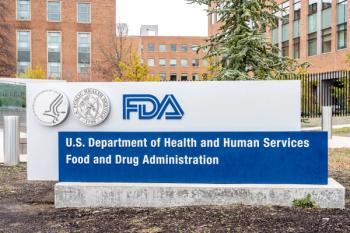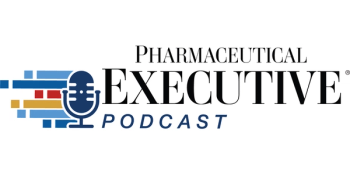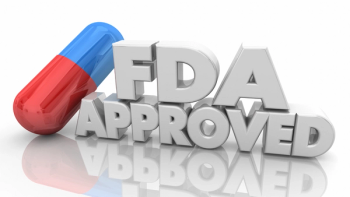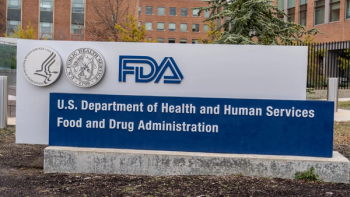
LivaNova’s aura6000 System Demonstrates High Response Rate in Moderate to Severe Obstructive Sleep Apnea
The aura6000 system showed a 65% responder rate at 12 months in patients with obstructive sleep apnea, defined as achieving at least a 50% reduction in apnea-hypopnea index.
Results from the pivotal OSPREY trial for LivaNova’s aura6000 system demonstrated promising 12-month data in patients with moderate to severe obstructive sleep apnea (OSA). According to the company, the study introduced a distinct neurostimulation approach known as proximal hypoglossal nerve stimulation (p-HGNS), which involves placing six electrodes along the upper segment of the hypoglossal nerve to broadly activate airway muscles and enable individualized therapy adjustments.1
"OSPREY is the first major multi-center randomized, controlled pivotal trial of hypoglossal nerve stimulation,” said lead study investigator Atul Malhotra, professor of medicine, University of California San Diego School of Medicine, sleep medicine specialist, UC San Diego Health, in a press release. “Patients in the device stimulation group experienced a rapid onset of therapy with continued improvement over time. Responder rates in the treatment group were strong throughout the first year with one in four patients responding on day one, 50% responding by month three, and 65% responding by the 12-month mark. In addition, patient-reported outcomes for daytime sleepiness and functional outcomes of sleep quality demonstrated meaningful improvement over the course of 12 months.”
The multi-center, randomized, controlled, open-label OSPREY trial evaluated the safety and efficacy of the aura6000 system compared to a no-stimulation control in OSA patients who were previously unwilling to or had failed treatment with positive airway pressure. The primary endpoint of the study was a reduction in apnea-hypopnea index (AHI) by at least 50%.
Results demonstrated a 65% responder rate at 12 months. Additionally, the system showed a 68% median reduction in both AHI and oxygen desaturation index from baseline to 12 months. Patients in the device stimulation group also reported meaningful improvements in quality of life, as reflected by higher scores on the Epworth Sleepiness Scale and Functional Outcomes of Sleep Questionnaire. No device-related serious adverse events were reported during the study.1
According to Medscape, OSA is increasingly prevalent in the United States for both adults and children. In women, there is an estimated prevalence of 2%, while men have an estimated prevalence of 4%. Individuals over 65 years of age are two to three times more likely to have OSA than those between 30 and 64 years of age.
Statistics from the National Commission on Sleep Disorders Research indicate that sleep-disordered breathing (SDB) affects anywhere from seven million to 18 million people in the United States on a minimal basis and 1.8 million to four million people on a relatively severe basis. Currently, the condition remains undiagnosed in an estimated 92% of affected women and 80% of affected men. African Americans have been found to be more susceptible to SDB than white people across all age groups. Additionally, Mexican American, Pacific Islander, and Chinese patients are considered to be at an increased risk.2
“The OSPREY trial demonstrated rapid and sustained improvement for patients who received active proximal hypoglossal nerve stimulation, including those with severe obstructive sleep apnea, elevated body mass index, and high risk of complete concentric collapse,” said Ahmet Tezel, PhD, chief innovation officer, LivaNova, in the press release. “The OSPREY 12-month results further validate the potential of this therapy as a treatment alternative for the large and growing OSA population. With the strength of our clinical data, expertise of our neuromodulation team, and strategic growth opportunity ahead, we are eager to bring this innovation to patients.”
References
1. LivaNova Announces 12-month Data from OSPREY Clinical Study for Moderate to Severe Obstructive Sleep Apnea, Demonstrating Strong Response and Durability of Therapy. BusinessWire. May 7, 2025. Accessed May 7, 2025. https://www.businesswire.com/news/home/20250507113359/en/LivaNova-Announces-12-month-Data-from-OSPREY-Clinical-Study-for-Moderate-to-Severe-Obstructive-Sleep-Apnea-Demonstrating-Strong-Response-and-Durability-of-Therapy
2. Obstructive Sleep Apnea (OSA). Medscape. Accessed May 7, 2025. https://emedicine.medscape.com/article/295807-overview#a5
Newsletter
Lead with insight with the Pharmaceutical Executive newsletter, featuring strategic analysis, leadership trends, and market intelligence for biopharma decision-makers.





